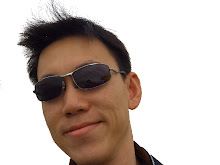
We treasure our individuality. And each of us, is of course, totally unique. However, we also know that much of who we are is shared. In this piece I wanted to produce uniqueness, but not lose sight of commonality.
I've drawn 3430 little puffballs each made up of 200 lines drawn from its centre. Each line follows a pseudo random trajectory unique to itself in all the world. 200 totally unique lines make for unquestionably totally unique puffballs. To put its uniqueness beyond any doubt, each line's colour is randomly selected, with a slight bias towards a darker shade of gray if its initial trajectory is closely aligned with the vertical and horizontal axis.
When viewed from a distance, these totally, completely, unequivocally unique puffballs tend to exhibit... commonality. They look similar from a distance, yet, are unique up close. They are each made up of unique lines, yet the algorithms that govern their creation are common.
So are they unique? Absolutely yes. Absolutely no.
 ps. There is a pair of identical twins amongst the 3430 puffballs. Can you spot them? :)
ps. There is a pair of identical twins amongst the 3430 puffballs. Can you spot them? :)








